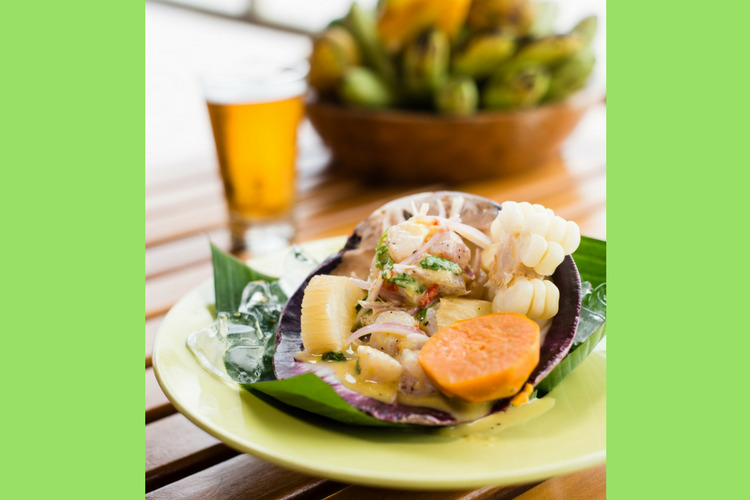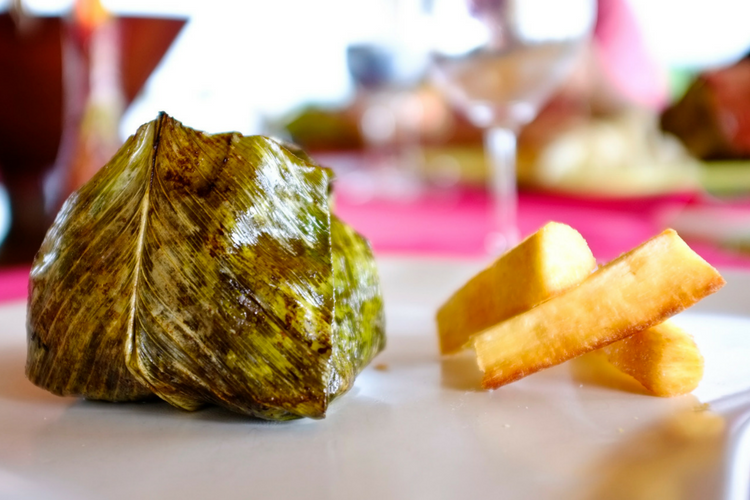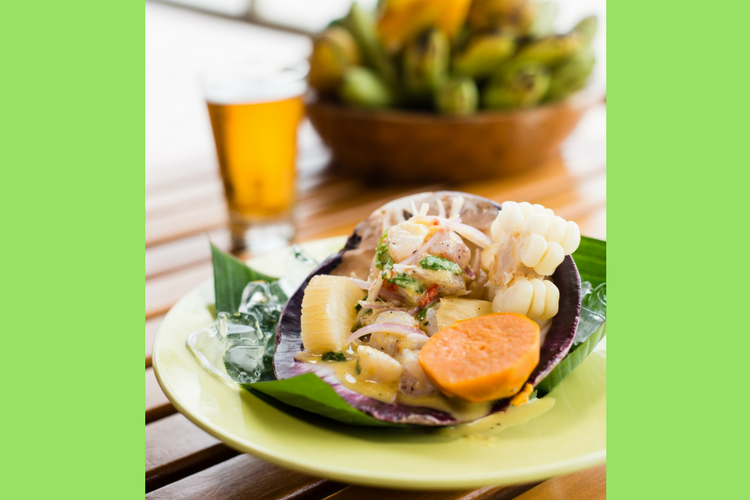5 Authentic Amazonian Foods (And How To Eat Them)
As someone who is always looking for an off-the-beaten-path adventure, I was intrigued when I heard there was a new riverboat making a three-night voyage through the Peruvian Amazon jungle. Delfin Amazon Cruises recently launched the Delfin III where just 43 passengers at a time get to trek through the jungle looking for sloths, swim near pink river dolphins, and go fishing for piranha.
What was exciting for me as a foodie, was that Delfin's Chief Hospitality Officer and Food and Beverage Director, Bruno Macchiavello, created a menu filled with authentic Amazonian cuisine. But what does that exactly entail? Tarantulas? Piranha? Anacondas? I had to find out.
So, I booked the cruise over President's Day weekend and asked to chat with the chef Raul Rodriguez via a translator about some of the most famous (and delicious) Amazonian dishes and ingredients. Here were his top five.
Juane
This is one of the leading dishes consumed in the Peruvian jungle and is a traditional meal eaten on June 24, the feast of St. John the Baptist. I was able to eat it for dinner one night and was delighted by both the presentation and taste.
"Juane is rice flavored with herbs and spices like palillo (turmeric), cumin, oregano, salt, and pepper that is wrapped in bijao leaves," said Rodriguez. "You don't eat the leaves, but they hold in all of the seasonings while it boils making the rice especially flavorful."
Meat, olives, and hard-boiled eggs can also be found in different variations of the dish. But the secret is in the waxy texture of the leaf that acts as the perfect cooking agent.
Cocona
"I love using the cocona in a lot of my dishes," said Rodriguez. "We make a bunch of different sauces, desserts, and juices with it."
So, what is a cocona exactly? In short, it's a yellow tomato with much more of an acidic flavor, like a berry. Think if a lime and a tomato made a baby. The fruit is used as a staple in many dishes from savory ones like fish soup and hot sauce to jams and tropical desserts.
Tigerfish
Since this region is defined by its famous river, you can only imagine there's plenty of fish to chow down on. One of the local favorites is a species the locals refer to as "tigerfish."
Not to be confused with the monstrous-looking ones found in Africa, the Amazonian tigerfish is much less aggressive and more commonly eaten. "Tigerfish is in the family of catfish," said Rodriguez. "It's edible white meat that's very delicious, and tender."
One of the top ways it can be prepared is in a dish called patarashca. Like the juane, the fish is wrapped in a leaf with onions, chiles, rice, and spices then steamed before serving. "This traditional preparation provides fragrance, aroma, and good taste," added Rodriguez. "It also keeps the food warm and all the ingredients concentrated inside."
Jungle spaghetti
One of the most interesting dishes I tried on the cruise was something called "jungle spaghetti." It looked almost like shredded paper on the plate and had the taste of a salad more than pasta.
"The jungle spaghetti is the young shoot from the heart of the palm tree found at the very top of the tree," said Rodriguez. "You have to climb up to harvest it. You take what looks like a white tube and shred with your fingers, like spaghetti. I then add lime juice, olive oil, and salt. That's it."
Piranha
While I did go fishing for piranha during my trip, my catches were a bit too small to prepare any dish. But I was curious to know if people even ate the watery beast. It turns out they do!
"Yes, the local people will eat piranha," said Rodriguez. "It is not a delicacy, but in case of an emergency, piranha can replace another fish. We deep fry it because it is very bony and we'll prepare it with a side like bananas."
The trip that is the subject of this review was provided at a discounted cost to the contributor.


